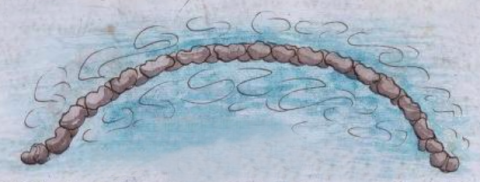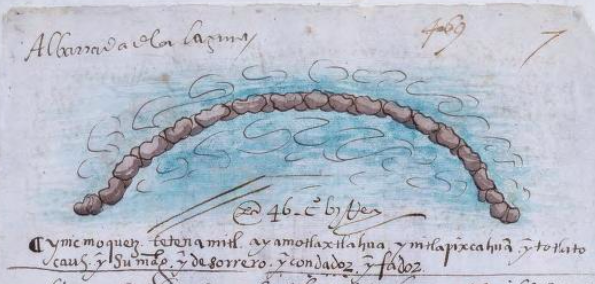tetenamitl (Osu7r)
This painting of a simplex glyph (or perhaps just an example of iconography) shows a bray-brown curving stone (tetl) wall (tenamitl) in a lagoon. The water is painted a light turquoise blue, and it has swirling lines (movement) all through it. The stones are irregular shapes, perhaps volcanic.
Stephanie Wood
This wall is called an albarrada in Spanish. Some sources give albarradón. Both terms appear to have an Arabic origin. The wall was constructed with Indigenous labor that was demanded by the colonizers, and their work went unpaid, which they protested.
Stephanie Wood
1551–1565
Jeff Haskett-Wood
agua, lagunas, piedras, paredes, albarradas, albarradones, trabajo forzado

te(tl), stone, https://nahuatl.wired-humanities.org/content/tetl
tenami(tl), wall, https://nahuatl.wired-humanities.org/content/tenamitl
la albarrada o el albarradón
Stephanie Wood
Library of Congress Online Catalog and the World Digital Library, Osuna Codex, or Painting of the Governor, Mayors, and Rulers of Mexico (Pintura del Gobernador, Alcaldes y Regidores de México), https://www.loc.gov/resource/gdcwdl.wdl_07324/. The original is located in the Biblioteca Nacional de España.
"The Library of Congress is unaware of any copyright or other restrictions in the World Digital Library Collection. Absent any such restrictions, these materials are free to use and reuse." But please cite the Biblioteca Nacional de España and this Visual Lexicon of Aztec Hieroglyphs if you use any of these images here or refer to the content on this page, providing the URL.





